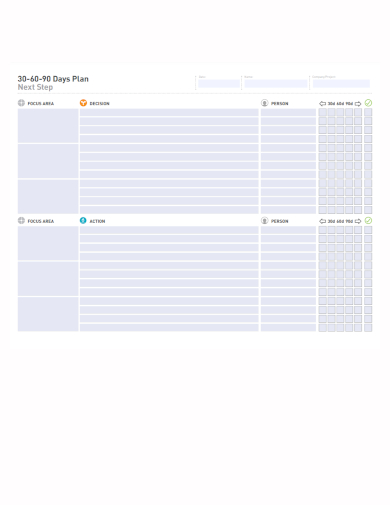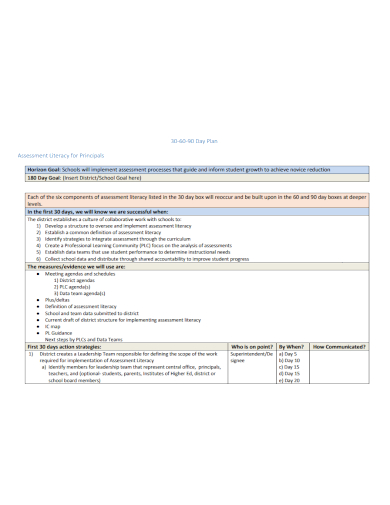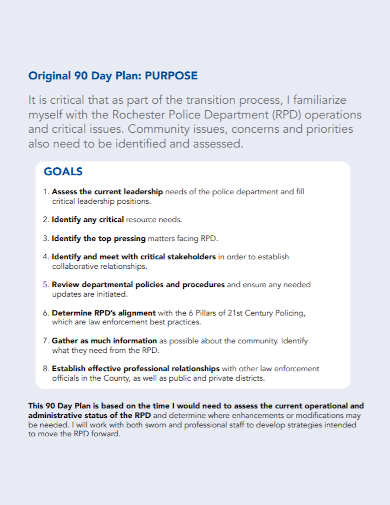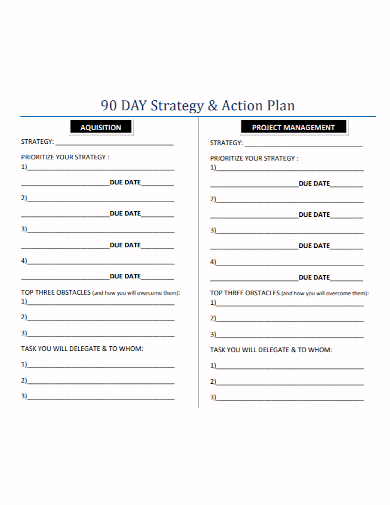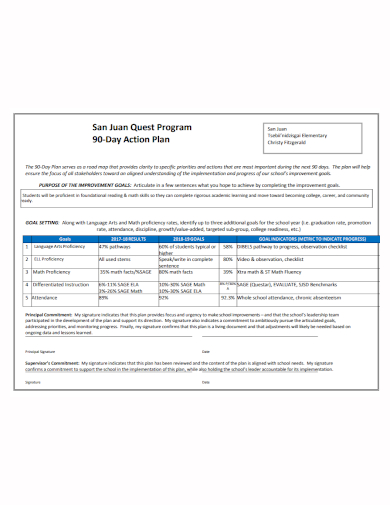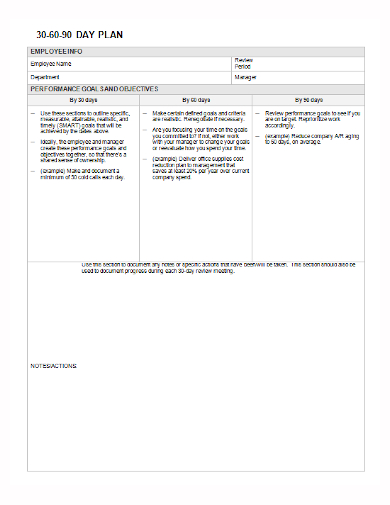Your 60-day plan has helped you develop crucial professional contacts and construct a plan to better influence the larger business over your first two months in your new post. You’ve reached the end of your probationary time. You’ve met with key stakeholders, devised a strategy, and started working on it to meet your short and long-term objectives. You have a mentor and are aware of your skill and knowledge limitations, as well as ways to create good chances in the organization. It’s critical that you start delivering on your plans in this third and essential month of your new job, and that you work on your personal development plan to close any detected skills or knowledge gaps. Here is our guide to the first 90 days to help you plan for success and get the most of our template.
What is a 90-day plan? A 90-day plan is a framework for determining how to onboard, to acclimatize, and educate new members of your team. Its goal is to ensure that new hires get off to a good start, feel welcomed, and learn how the team and company operations. The most important purpose in designing the plan is to ensure that each new team member understands what they’ll be expected to learn and deliver in their first 90 days. Some call it a 90-day action plan, which emphasizes the need of being proactive. Don’t just do it on the spur of the moment. Make a plan, set milestones, arrange regular check-ins, and openly collect and share information. Getting up to speed will be quicker and easier with practice and a plan. It also supports the development of the team and corporate culture from the start.
10+ 90-Day Plan Samples
1. 90-Day Plan Template

2. 90 Day Sales Action Plan Template

3. 90-Day Business Plan Template

4. 90-Day Action Plan
5. 90-Day Startup Business Plan
6. Sample 90-Day Business Plan
7. 90-Day Assessment Plan
8. 90-Day Goals Plan
9. 90-Day Strategy Action Plan
10. 90-Day Program Action Plan
11. 90-Day Employee Plan
The 90 Days Plan
- You’ve been in your new job for three months. It’s critical to check in with your boss to discuss your progress. What’s the status of your three-month plan? Are you doing well, and are there any areas where you may use some more help? Agree on what your next steps should be and where you should focus your development efforts.
- Update your 90-day plan‘s business priorities as needed. Following your talk with your manager, make a list of any new objectives you have to ensure that you keep on track with your three-month plan and address any recognized growth needs.
- Make sure to start executing plans to provide these ideas and improvements where you recognized possibilities to make quick changes for quick wins. As you grow more integrated into the team and the larger organization, you will have access to larger projects and become more involved in their implementation; as a result, you will likely have a much longer list of duties to do. Make sure you’re keeping track of your tasks and completing your required steps on time.
- This may or may not have changed since your 60-day plan. However, at this point in your onboarding process, it’s likely that it has since you should have been gradually introduced to new activities over the previous two months. Make sure you’re keeping track of your daily duties and doing them to the best of your ability.
- Personal and professional growth is a continuous process. Whether you or your management have highlighted any specific areas where you need to improve, you should always strive to broaden your knowledge and expand your network. Look for any relevant groups, networks, and/or events that are taking place at your company or at industry-specific organizations outside of it. Add any areas that need to be improved to your plan and keep track of your progress. Continue to work on your development plan and ask your manager for any input you may require.
FAQs
What should be included in a 90-day plan? in
We’ve got you covered if you’re seeking advice on how to construct a 90-day plan. However, keep in mind that an efficient 90-day plan will differ depending on your company, goals, and individual requirements. How can you use this strategy to help a new team member get off to a good start? What immediate wins can they deliver in order to build traction? Who are the most important players? How are they going to get into the system and have an impact? What should a 90-day wrap-up blog post or other written summary contain?
How to organize your 90-day plan?
There are a few organizational principles to concentrate on in general. They’re centered on time milestones, such as Week 1, Day 30, Day 60, and Day 90 wrap-up, as well as consistent, frequent check-ins, especially with your boss. You’ll set goals for what you’ll learn and deliver, as well as when you’ll do it. The importance of stating everything out cannot be emphasized. It’s the difference between clarity and ambiguity, between empowerment and inefficiency.
A 90-day plan has even more benefits to offer. It’s more than a to-do list; it’s the foundation for collaborating, learning, and comprehending the team’s and company’s culture. If you want to see more samples and formats, check out some 90-day plan samples and templates provided in the article for your reference.
Related Posts
FREE 8+ Debt Management Plan Samples in PDF | DOC
FREE 10+ Sales Management Plan Samples in PDF | MS Word | Apple Pages | Google Docs
FREE 4+ 30-60-90-Day Marketing Plan Samples in MS Word | Google Docs | Apple Pages | PDF
FREE 10+ Higher Education Lesson Plan Samples in MS Word | Pages | Google Docs | PDF
FREE 9+ 30-Day Marketing Plan Samples in PDF | MS Word | Apple Pages | Google Docs
FREE 3+ Sales Team Action Plan Samples in PDF | MS Word | Apple Pages | Google Docs
Marketing Plan For Small Business Samples
FREE 7+ Fashion Business Plan Samples in PDF
FREE 10+ Sprint Planning Samples In MS Word | Google Docs | PDF
FREE 10+ Wedding Planning Samples in MS Word | Apple Pages | Powerpoint | PDF
FREE 9+ Monthly Study Planner Samples in PSD | Illustrator | InDesign | PDF
FREE 9+ Sample Curriculum Planning Templates in PDF | MS Word
FREE 10+ Teacher Development Plan Samples in MS Word | Google Docs | Apple Pages | PDF
FREE 10+ Basketball Practice Plan Samples in PDF
FREE 12+ School Business Plan Samples in PDF | MS Word | Apple Pages | Google Docs



